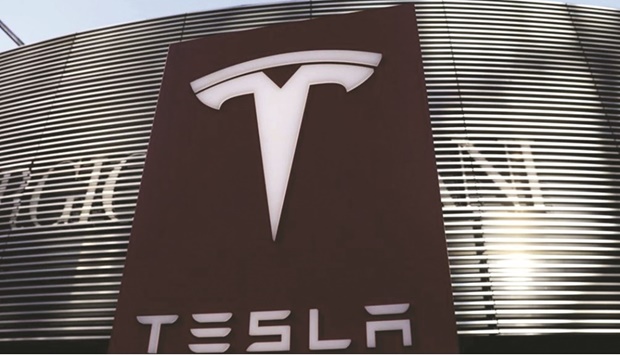European Energy Crisis: R. Baroudi: “It is entirely possible for Greece to be a strategic energy hub for Europe”

Roudi Baroudi
CEO, Energy & Environment Holding, Qatar
Interview with Newmoney.gr by Symela Touchtidou
Questions:
- What is your assessment on the current energy crisis? How long will it last? Is there a way out of it? Is there a way out of it without Russia included?
Obviously it’s a very serious problem, not only for Europe, but also for the whole world as this is affecting so many aspects, from electricity crises to petrol prices for vehicles, transportation in general, food chain, etc.
It’s very difficult to predict how long it will last as the war has just begun, but four months in, it has already caused so much damage. Predicting an end-date is a difficult ask because both the problems and the solutions have so many moving parts. First, the problem is a product of several contributing factors, including: earlier decisions to phase out coal and nuclear plants in some European countries; a failure to sufficiently diversify Europe’s overall energy basket (leading directly to over-reliance on Russian supplies, especially pipelined natural gas); and the after-effects of the early-pandemic collapse of oil and gas prices, which forced many producers around the world to shut down, leading in turn to upward pressure on international prices when demand recovered. The combined impact of all this was made even heavier by the timing: the crisis comes just as we are struggling to keep up with decarbonization goals by transitioning away from fossil fuels and toward cleaner and greener energy, leaving European energy markets extremely vulnerable to supply interruptions – or even the possibility thereof. To have had the Ukraine war break out when it did was in many ways worst-case scenario, and that’s what we’re dealing with.
Second, the effectiveness and timeliness of solutions will be determined by multiple variables that depend on sound decision-making and dedicated follow-up, adequate financing from both governments and multilateral financial institutions, and cooperation among EU countries and with their neighbors in North Africa and the Eastern Mediterranean. Europe has several buttons it can push, and the more of them it pushes, the better the results will be. Some of these would be to delay the coal/nuclear phaseouts; radically increase investments in renewables like wind and solar; expand Europe’s capacity to receive and process shipments of liquefied natural gas; make better use of such capacity in Spain by linking it to France, and therefore the rest of Europe, by pipeline; install shared power grids with neighboring regions; help develop undersea gas resources in the Eastern Mediterranean; and build new pipelines linking EU markets to gas producers in Central Asia. The more of these things we do – and do well – the sooner the crisis will recede. The more we allow implementation of such steps to be delayed, the longer the crisis – and Europe’s vulnerability to similar problems in the future – will persist.
So in the final analysis, yes, we can get out of this crisis, but there is no single path that will get use there. And yes, we can do so with or without the participation of the Russians, but of course the process would be much easier with them somehow included.
- Do you see energy prices ever going back to the 2020 levels? Will Europeans have to adjust to living with expensive electricity and fuels? What would that mean for the overall European economy?
In the medium/long terms, provided we take all or most of the steps I listed earlier, energy prices will definitely go back one day to the levels for 2020 as a whole, but not to the negative prices seen briefly when COVID-19 caused demand to fall off a cliff before production had been dialed back, causing a sudden glut. As I’m sure you know, commodity prices for oil and gas are connected not only to their respective supply and demand situations, but also to each other. The conditions that caused negative prices were highly unusual, and even if we approached those levels again, by their nature they could not last long.
Nonetheless, prices can be brought down, and the process is already under way. As of today, many responsible countries are increasing their production of oil and gas to help calm markets in Europe and elsewhere, but some countries are refusing to, while several others are under sanctions, preventing them from bringing to the market several million barrels needed to cool off the price hikes. For the time being, Europeans are having a very hard time to cope with electricity and fuel costs, especially here in Greece, where energy prices are unbelievably high.
Germany is another example.
Given the situation, and because it’s probably the fastest method available, some European countries need to suspend or reverse their decisions to close their nuclear and coal power plants. Instead, they need to delay closures for another five-to-seven years, and maybe build one or two new coal plants, too, to cope with rising demand and restrain upward pressure on prices until other sources of energy can come online.
Despite the likelihood that prices will eventually retreat, in the short to medium term, Europeans definitely need to adapt. Studies have indicated that elevated energy prices will mean reduced economic growth, especially in Germany, whose importance to the rest of Europe cannot be overstated. That means more people will have less means to cope with higher energy prices, and that makes it incumbent on EU and national leaders to develop policies and mechanisms to cushion the blow, especially for lower-income families.
- The Greek government asks from the EU “a targeted and temporary intervention” in the natural gas wholesale market to bring prices down. Do you believe such an intervention is possible, and if so, what impact could be?
It is definitely possible. There will be circumstances when the EU has to assist EU members, such as during times of war, and the current situation is an extraordinary one, unseen since World War II. With this extraordinary state of affairs, the Greek government – like any other member state – can and should propose viable paths forward, e.g. caps on rising electricity, petroleum and/or other energy costs. At the very least, with the help of the EU, the government should be able to subsidize certain low-level consumers, for instance households whose consumption is less than 100 KWh per day.
- Are you aware of the ‘Six-Point Plan’ of the Greek government? What is your assessment on it? (available here https://primeminister.gr/en/2022/03/09/28836 )
Yes, I am aware of the Six-Point Plan that Prime Minister Mitsotakis has proposed. It’s a very positive move forward in order to cushion some of the pain from disastrous price increases, which are driving inflation across the Greek economy. Here, Greece is contributing to the European Union’s overall policy formulation, which seeks to provide protection against the major consequences emanating from the Russia-Ukraine war, and the Greek plan is definitely doable. There are other measures, too, that could be taken to shield the country from the continuous negative repercussions of the war in Ukraine. Of course gas supplies could be increased by expanding the Trans-Anatolian gas pipeline (TANAP) to boost imports from Azerbaijan gas, for instance, but keeping coal power plants would also help contain pressure on electricity prices, as would adding a nuclear plant of 4,000-6,000 MW. Moving quickly to promote energy conservation, too, would also help alleviate spiking costs and give Greek households and business sustainable access to more affordable electricity.
- Greece is the only European country where electricity prices are directly linked to natural gas international stock prices. Do you believe there is a way out of this? What measures could be taken to bring electricity prices in the Greek market down?
Yes, there is definitely a way out. This is the responsibility of the Regulatory Authority for Energy, which controls and regulates energy prices in Greece. Given the circumstances, the RAE certainly has a powerful incentive to propose a different mechanism, one that would follow other European countries in order to help keep energy prices at affordable costs for all.
- You have written a book on “Maritime Disputes in the Eastern Mediterranean: The Way Forward”. Do you believe there is room for peaceful cooperation between Greece, Cyprus and Turkey in the energy field and if so, what would be the means to achieve it?
Yes, I believe very strongly that Greece, Cyprus, and Turkey could and should find ways to cooperate in the energy field, and there several ways in which working together would offer many advantages. One is exploration and development of oil and/or gas deposits beneath the seabed of the Eastern Mediterranean, in which the parties could share costs, share data, reduce duplication, invest in one another’s fields, etc. The same could go for offshore wind farms.
Another is the construction of one or more pipelines that could transport East Med gas to the European mainland without having to have the entire route under water: just get it to Turkish coast and run the rest of it overland. Potentially, the three countries also could team up to build an LNG plant, an enormous investment and therefore one for which spreading the risk would be very attractive.
Definitely there is always room for peace and there is always room for diplomacy. The way forward is for Greece and Turkey to continue their discussions based on the principles of the UN Convention on the Law of the Sea (UNCLOS) which is the Atlas of the World Ocean. Unlike Cyprus, neither Greece nor Turkey is a signatory to UNCLOS, but its guidelines and precedents are applicable to – and actionable by – all countries. UNCLOS provides a legal and technical infrastructure with which Greece and Turkey, as the main parties, could sit down and, with reference to surveys using the latest science and technology, arrive at a fair and equitable maritime solution. Both Prime Minister Mitsokakis and President Erdogan have expressed their willingness to solve this conflict, and I believe that right now, the time is right to get it done. In my book, I have highlighted studies indicating that both countries would lose some maritime areas, but both countries would gain far more: the beauty of a win-win outcome, one in which both neighbors would be able to benefit from the region’s oil and gas wealth, and both peoples would be able to enjoy peace and prosperity.
- Greece aspires to become a strategic energy hub for Europe. Is this possible and if so what benefits will it bring to the country?
Absolutely it is possible. Depending on what quantities they have, every East Med country that ends up producing oil and gas can become an energy hub to some extent at least. Looking back, 10 years ago, Cyprus was slotted to become a nice regional hub for pipelines and an LNG terminal, and if development keeps on growing, it still has a good chance to make those predictions come true. Greece could also become a major energy center in the next decade if their exploration efforts confirm the same kinds of deposits found offshore other East Med countries like Egypt and Israel. Indeed a lot of private sector firms are interested, but this will probably take 5-10 years after exploration confirms sufficient quantities of hydrocarbons.
The benefits of hub status would be significant: more good-paying jobs for Greek citizens, more profits for Greek companies, more revenues for the Greek government, more funds available for roads, schools, and hospitals, more influence on the European and global stages, etc.









